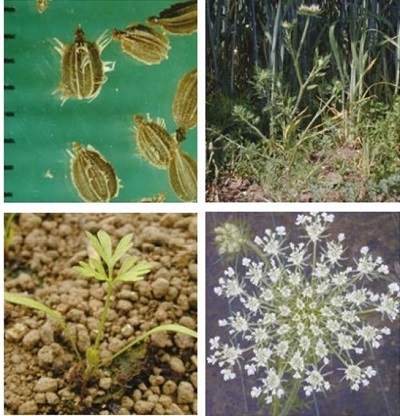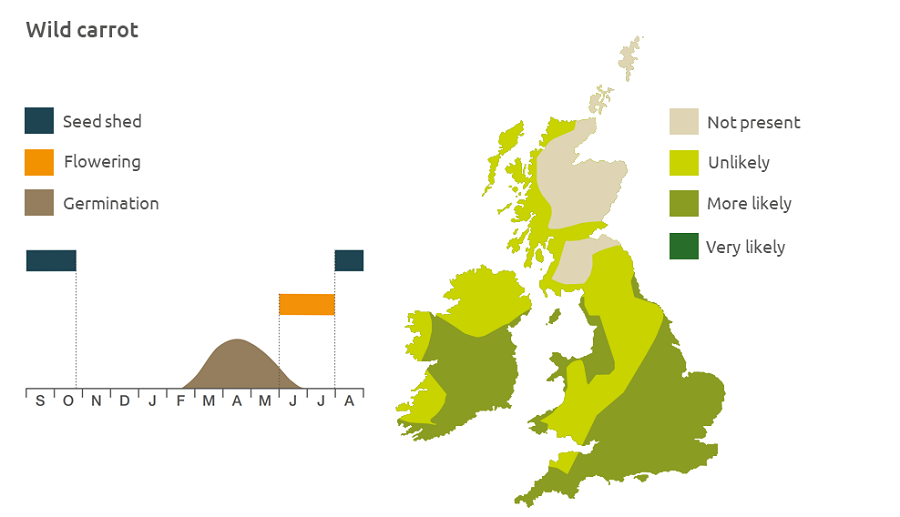- Home
- Knowledge library
- Distribution and biology of wild carrot in the UK
Distribution and biology of wild carrot in the UK
Wild carrot is usually found in field margins and has value to biodiversity. Find out how to identify and control this broad-leaved weed.
Overview
Wild carrot (Daucus carota) is usually found in field margins and seldom encroaches far into arable land, but it can be a problem in perennial crops.
It reproduces by seed. Autumn-germinating plants remain green overwinter. The flowering stem dies in the autumn while often retaining seed. It is capable of interbreeding with cultivated carrot.
- It has value to biodiversity
Description
It is usually a biennial or short-lived perennial dicotyledon, though it can also flower in the first year. It grows up to 80 cm tall. The basal rosette leaves are hairy and coarsely divided, with triangular leaf stalks. The flat flowerheads are densely packed with white flowers.
Key features
Plant: It smells of carrot when bruised. The flowering stem appears to zigzag. The buds and dried flowerheads are cup-shaped.
Lookalikes
Wild carrot may be confused with shepherd’s-needle as young plants: the first true leaves of wild carrot are hairy and coarser than shepherd’s-needle which has few hairs.

Location and life cycle

Geographic distribution
Wild carrot is found up to an altitude of 400 m in England and the warmer coastal areas of Scotland, Wales and Ireland. It prefers disturbed or waste ground, or open turf on chalky downland.
Soil type
It prefers infertile but well-drained chalky soils.
Seed statistics
- Seed longevity: >5 years
- Seed weight: 1 mg
- Seeds/floret: 2
- Seeds/plant: 1,000–40,000
Management
It does not persist where there is routine cultivation.
For advice on herbicides, please speak with your agronomist or adviser.
When was this information last updated?
This page is based on content from the encyclopaedia of arable weeds publication. Since it was first released in 2008, the publication has been redesigned several times but not revised. However, it remains a good foundation for general information on the distribution and biology of weeds.

